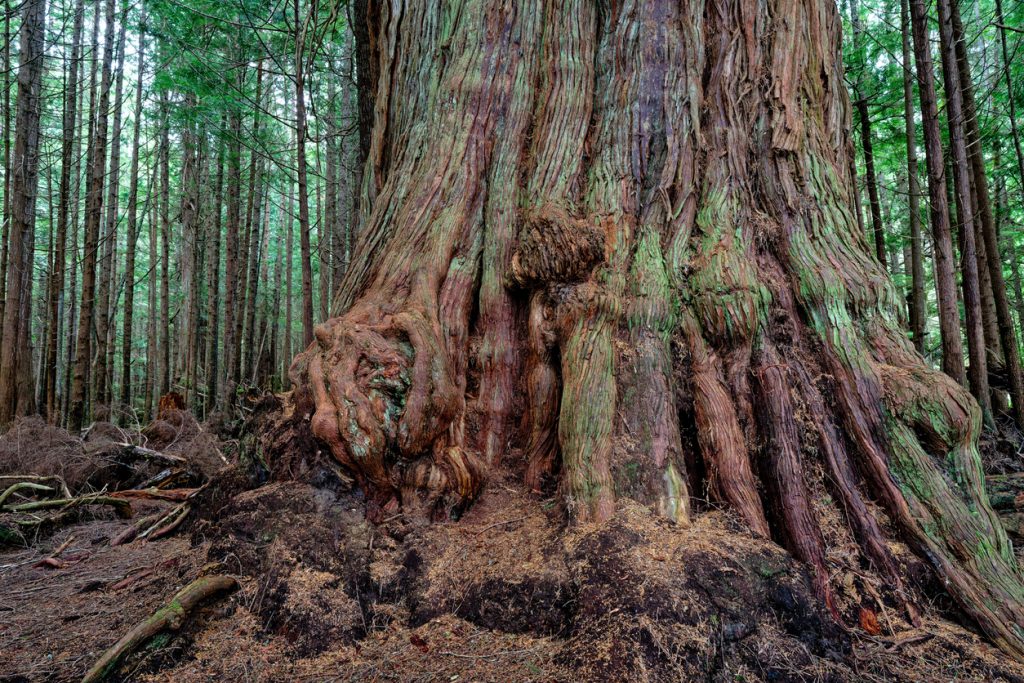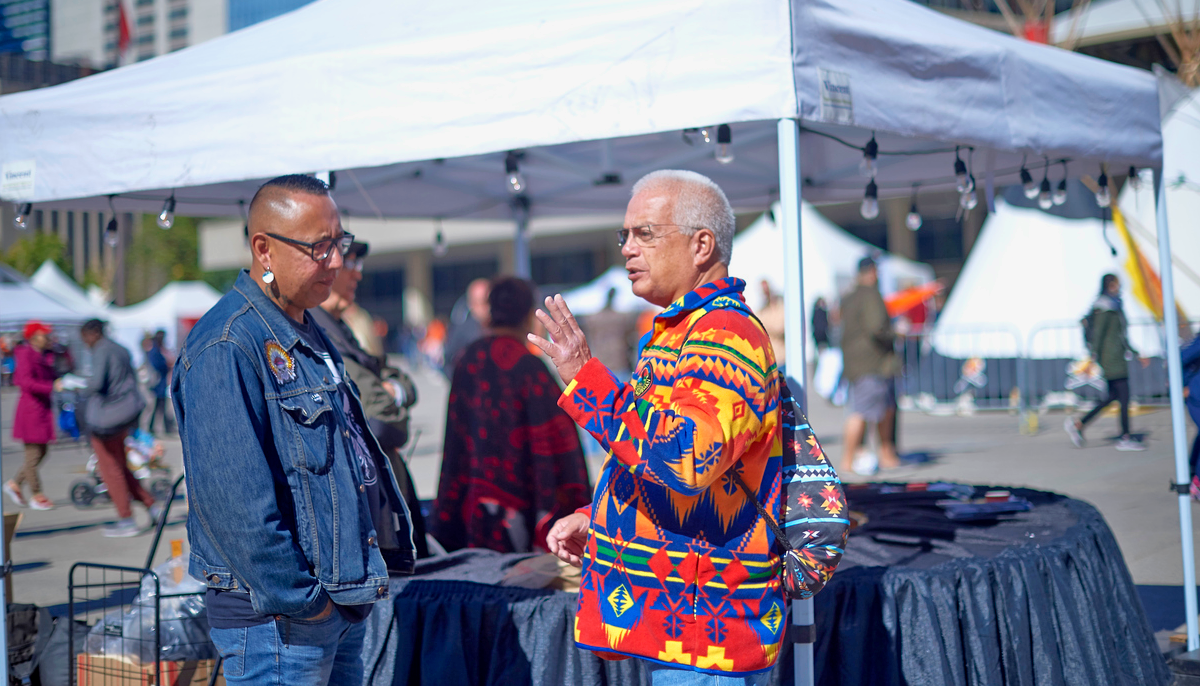|
Getting your Trinity Audio player ready...
|
Indigenous (an adjective): The Oxford English dictionary has two meanings: originating or occurring naturally in a particular place; (of people) inhabiting or existing in a land from the earliest times or from before the arrival of colonists.
Indigenize (a verb): To alter (something) so as to make it fit in with the local culture.
Indigenization (a noun): The act of making something more native; transformation of some service, idea, etc. to suit a local culture, especially using more Indigenous people in public administration, employment and other fields.
I remember when I first heard the term “Indigenizing” and my initial reaction to it. I acknowledge that the speaker was using it to express the work they were doing in a good way – but it hit me like me a punch in the stomach. The question that came to my mind: Is this another word used by institutions and organizations to apply a label with a set of criteria that defines and is used to accommodate Indigenous Peoples? As I thought more about it, other made-up words came to mind, like to “Ojibawize,” “Mohawkinize,” “Anishnabayize” and “Creeize.”
This article is the first in a CareerWise series on “Indigenizing career development.” Watch for more on CareerWise in the days to come, or subscribe to our CareerWise Weekly newsletter to receive the special themed issue.
How can one word capture the richness of the cultures of all Indigenous Peoples across Canada? Is this another way to encourage a view of pan-Indigeneity or to inform a one-size-fits-all approach? This was some years ago, and since then I have listened, I have read and participated in many conversations. I paid particular attention to how it is being used and who is using this word in their work. I have seen this word used in many spaces – including in programs and policies within the career development field. But today, I still am left with the question and a quandary: How do people “Indigenize” their practices or their organizations? What does that really mean? Is there a better way to express the intention of “Indigenizing”?
“How can one word capture the richness of the cultures of all Indigenous Peoples across Canada? Is this another way to encourage a view of pan-Indigeneity or to inform a one-size-fits-all approach?”
In trying to understand the how the words “Indigenize” and “Indigenization” are being used, I undertook a search on the web and read many different policies. I was glad to see that some of my same concerns about using “Indigenizing” were also expressed by others in the field. Here are two samples that I came across that are used to define Indigenization:
- Indigenization is about incorporating Indigenous worldviews, knowledge and perspectives into the education system, right from primary grades to universities.
- Led by the Office of Indigenous Initiatives, “x” organization has been working toward the goal of Indigenization, a term that reflects the incorporation of Indigenous knowledge into the daily life of the university.
Again, language and words matter. Just adding the word “Peoples” after the word Indigenous changes the whole understanding of the “Indigenization” as described in these definitions. The word Indigenous is an adjective and therefore is meant to describe a noun. In my experience, more and more people are using Indigenous as if it were a noun. It is being used in place of Native or Aboriginal, just as those words once replaced the word “Indian” or “Eskimo.” I am sure many Indigenous Peoples, like me, have been asked “Are you Indigenous?” If I’m being playful, my response is “Indigenous to what?” But most often, I answer, “I am Teme-Augama Anishnabai Kwe. My people are one of the many Indigenous Peoples who live in Canada.”
Other examples of how the nuances of language matter happen when people use the terms “the Indigenous People of Canada” or “Canada’s Indigenous People.” First, there are not Indigenous “People” – but “Peoples.” We are not all the same. Using the plural acknowledges the differences between the many First Nations, Métis and Inuit peoples in Canada.
Secondly, most Indigenous Peoples have occupied their traditional lands since “time immemorial” – long before recorded history, for at least tens of thousands of years. The entity we call Canada is the product of a form of socio-economic organization that has been appliable to our lands for a bit more than 150 or so of those years. Indigenous Peoples are not “of Canada” nor are they possessions of Canada; Indigenous Peoples were here long before the creation of Canada. I prefer to say “Indigenous Peoples across Canada” in my work. It may seem subtle but each of those phrases say very different things.

When one wants to work and engage with the Indigenous people of a specific place (i.e. in a Nation or community), it is important that they take the time to learn from them and to learn about them. Cultural protocols and processes are very different from place to place.
I experienced the importance of understanding cultural protocol in a workshop I facilitated. A participant described that in following the policy of her organization, she needed to find an Elder to open their meeting. She was finding it difficult to do so in the community where the meeting was to happen. When she finally found one, the Elder came, opened the meeting and then promptly left. The participant was disappointed. In her experience and her understanding, an Elder would open the meeting, stay, listen, participate and close the meeting. She later came to understand that what she was asking for was not the practice in that particular community. Although the Elder did what was asked of her, it was not her community’s customary protocol. The problem here is that the participant was following policy, but the policy did not fit the protocols of the community where the event would happen. Rather than ask the Elder to do a particular action or ceremony, she/he should have been asked about the protocols of their community.
As I close this article, I would like to commend the many organizations, institutions and Canadians that are making best efforts to respond and bring life to the 94 Calls to Action from the Truth and Reconciliation Commission. It is making a difference, but there continues to be much more to do. The significant changes that need to be made will take time and we must remember there are no shortcuts. To quote Senator Murray Sinclair, Chair of the Truth and Reconciliation Commission:
“It’s going to take us a while to get there. It took seven generations to create the harm through the residential schools. It will take a few generations to turn it around.”
From a career development perspective, I challenge you to think about how we can better communicate and action the intention that is encompassed when we use the words “Indigenization” or “to Indigenize.” One size does not fit all.
CERIC and CDANZ recently hosted a FREE webinar series on “Global Perspectives in Career Development: Empowering Your Inclusive Practice Through Indigenous Knowledge and Worldviews.” Check out part 1 below, featuring Victoria Grant, Peter Apulu, Trina Maher and Lynette Reid, or visit ceric.ca/webinars to access the recordings.




